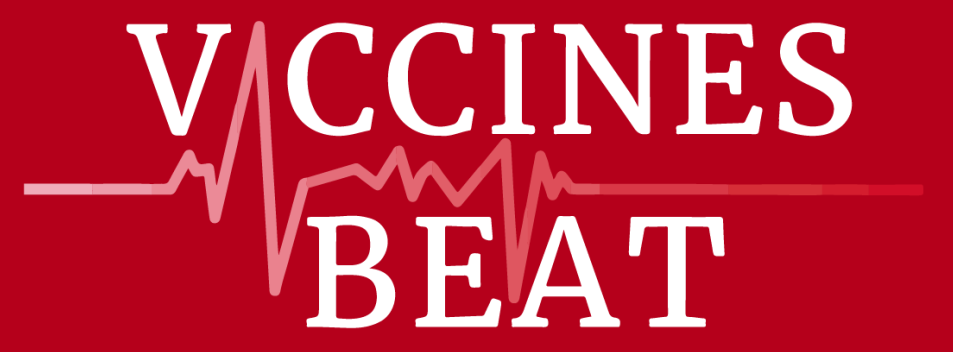Ware-Gilmore F, Jones MJ, Mejia AJ, Dennington NL, Audsley MD, Hall MD, Sgrò CM, Buckley T, Anand GS, Jose J, McGraw EA. Evolution and adaptation of dengue virus in response to high-temperature passaging in mosquito cells. Virus Evol. 2025 Apr 24;11(1):veaf016
doi: https://doi.org/10.1093/ve/veaf016
Editorial comment: The findings of this study suggest that viruses selected for growth at higher ambient temperatures may experience tradeoffs between thermostability and replication in Aedes aegypti and Aedes albopictus. Such associations might also have implications for the suitability of virus transmission under a changing climate.
Munro APS, Drysdale SB, Cathie K, Flamein F, Knuf M, Collins AM, Hill HC, Kaiser F, Cohen R, Pinquier D, Vassilouthis NC, Carreno M, Moreau C, Bourron P, Marcelon L, Mari K, Roberts M, Tissières P, Royal S, Faust SN. HARMONIE Study Group. 180-day efficacy of nirsevimab against hospitalization for respiratory syncytial virus lower respiratory tract infections in infants (HARMONIE): a randomised, controlled, phase 3b trial. Lancet Child Adolesc Health. 2025 Jun;9(6):404-412
doi: https://doi.org/10.1016/S2352-4642(25)00102-6
Editorial comment: HARMONIE is an ongoing, open-label, randomized, controlled phase 3b study conducted in France, Germany, and the UK. The trial enrolled infants aged 12 months or younger, born at a gestational age of at least 29 weeks, who were randomly assigned (1:1) to receive either a single intramuscular dose of nirsevimab (50 mg for infants <5 kg, or 100 mg for ≥5 kg) or standard care without RSV prophylaxis, prior to or during their first RSV season. Between August 8, 2022, and February 28, 2023, a total of 8,057 infants were randomized: 4,038 to the nirsevimab group and 4,019 to the standard care group. Over a follow-up of up to 180 days, RSV-associated lower respiratory tract infection hospitalizations occurred in 12 infants (0.3%) in the nirsevimab group versus 68 infants (1.7%) in the standard care group. This corresponds to a vaccine efficacy of 82.7% (95% CI: 67.8–91.5; p<0.0001). These findings support that nirsevimab provides consistent and durable protection against RSV-related hospitalization for at least six months.
Joseph-Munné J, Maya-Hoyos M, Saubi N, Perez S, Lopez MAM, Baron E, Soto CY. Recombinant Mycobacterium bovis BCG-Based HIV Vaccine: Failures and Promising Approaches for a Successful Vaccine Strategy. Vaccines. 2025; 13(6):606
doi: https://doi.org/10.3390/vaccines13060606
Editorial comment: Recombinant Bacille Calmette–Guérin (BCG) is a promising live-attenuated bacterial vector for HIV vaccine development due to its ability to robustly stimulate T-cell–mediated immunity. This review provides a comprehensive analysis of the key factors influencing the design and optimization of recombinant BCG as a live vaccine platform, including: (i) expression vector systems; (ii) selection of HIV immunogens; (iii) promoter choice for regulated antigen expression; (iv) BCG strain selection and codon optimization; (v) plasmid genetic stability; (vi) the impact of pre-existing immunity, immunization route, and dosage; and (vii) safety considerations.
Hoefer A, Seth-Smith H, Palma F, Schindler S, Freschi L, Dangel A, Berger A, D’Aeth J, Cordery R, Delgado-Rodriguez E, Gruner E, Flury D, Hinic V, Kofler J, Lienhard R, Mariman R, Nolte O, Schibli A, Toubiana J, Traugott M, Jacquinet S, Indra A, Fry NK, Palm D, Sing A, Brisse S, Egli A. 2022 European Diphtheria Consortium. Corynebacterium diphtheriae Outbreak in Migrant Populations in Europe. N Engl J Med. 2025 Jun 4
doi: https://doi.org/10.1056/NEJMoa2311981
Editorial comment: This publication reports 346 confirmed cases of diphtheria among migrants in Europe. Of these, 268 cases (77.5%) presented with cutaneous diphtheria, 53 (15.3%) with respiratory diphtheria—including 11 (3.2%) with pseudomembrane formation—and 9 (2.6%) with both respiratory and cutaneous manifestations. Genomic analysis identified four major genetic clusters of Corynebacterium diphtheriae, indicating a multiclonal outbreak. The presence of each cluster across multiple European countries highlights repeated cross-border transmission. The high number of infections among migrants raises significant public health concerns, particularly in light of emerging antimicrobial resistance that may compromise first-line treatment options. These findings underscore the urgent need to expand diphtheria vaccination coverage globally, including consideration of DPT (diphtheria, pertussis, tetanus) immunization for all migrants upon arrival.
Fisman D, Pérez-Rubio A, Postma M, Smith DS, Mould-Quevedo J. Maintaining the value of influenza vaccination – the shift from quadrivalent to trivalent vaccines: an expert review. Expert Rev Vaccines. 2025 Dec;24(1):499-508
doi: https://doi.org/10.1080/14760584.2025.2515597
Editorial comment: This review provides an expert perspective on the sustained value of seasonal influenza vaccines as they transition from quadrivalent to trivalent formulations, based on apparent elimination of the B/Yamagata strain from circulation and subsequent advice from the World Health Organization (WHO) to remove the B/Yamagata.
Skinner J, Kayentao K, Ongoiba A, Healy SA, Hu Z, Preston AC, Niangaly A, Schwabl P, Cisse H, Doumbo S, Doumtabe D, Traore A, Li S, Peterson ME, Seilie AM, Chavtur C, Staubus W, Chang M, Kelley K, Traore H, Djiguiba A, Keita M, Ouattara A, Doucoure M, Keita M, Diarra D, Sylla M, Diakite D, Konate M, Traore S, Zéguimé A, Dolo A, Neafsey DE, Murphy SC, Traore B, Seder RA, Crompton PD. Anti-sporozoite monoclonal antibody for malaria prevention: secondary efficacy outcome of a phase 2 randomized trial. Nat Med. 2025 Jun 3
doi: https://doi.org/10.1038/s41591-025-03739-y
Editorial comment: CIS43LS is a long-acting monoclonal antibody specific for the Plasmodium falciparum circumsporozoite protein expressed on sporozoites. In this study, the authors analyzed 5,015 dried blood spot samples collected prior to administration of CIS43LS or placebo and then biweekly over a 6-month malaria season. At 6 months, the efficacy of CIS43LS in preventing Plasmodium falciparum infection, as detected by qRT-PCR and assessed using a time-to-event analysis, was 87.4% for the 40 mg/kg dose (adjusted 95% confidence interval [CI], 79.5–92.3; P < 0.001) and 77.0% for the 10 mg/kg dose (adjusted 95% CI, 65.0–84.0; P < 0.001), compared to placebo. In a post hoc analysis using a gametocyte mRNA-specific qRT-PCR assay, 6-month efficacy against gametocytemia was 87.7% for 40 mg/kg (adjusted 95% CI, 75.6–93.8; P < 0.001) and 73.0% for 10 mg/kg (adjusted 95% CI, 54.0–84.0; P < 0.001), relative to placebo. These findings demonstrate that a single dose of anti-sporozoite monoclonal antibodies can provide durable, sterile protection against P. falciparum infection, highlighting their potential to significantly reduce malaria burden and interrupt transmission.
Yoshizawa K, Muranaka E, Hase R, Namiki M, Hanayama S, Ozawa Y, Furukawa S, Kikkawa Y. Emergence of Japanese encephalitis in a previously non-reported area: Three consecutive annual cases from a tertiary center in Narita, Chiba, Japan. J Infect Chemother. 2025 Jun;31(6):102706
doi: https://doi.org/10.1016/j.jiac.2025.102706
Editorial comment: This study reports three consecutive cases of JE in a single hospital in Narita over three years. Although the PCR test confirmed the diagnosis in one case, the PCR was negative and IgM captured ELISA in the reference laboratory confirmed the diagnosis in the other two cases. These cases suggest that the number of JE patients may be underestimated in Japan. Physicians should consider JE as a differential diagnosis, when encountering the cases of encephalitis or meningitis with unknown etiology during the warm season even in the area where JE has not been reported.
Choi ANX, Gubler DJ, Ooi EE. Genetics of dengue epidemics. Trends Microbiol. 2025 Jun 5:S0966-842X(25)00154-4
doi: https://doi.org/10.1016/j.tim.2025.05.007
Editorial comment: This review explores how genetic changes influence dengue virus (DENV) fitness and investigates their association with specific outbreaks, with a particular focus on cases where the biological impact of these mutations has been experimentally characterized. The findings reveal that most of the relevant genetic alterations occurred in the nonstructural genes and untranslated regions (UTRs) of the DENV genome—areas often overlooked due to the predominant focus on the envelope (E) gene in sequencing efforts. As a result, key genetic features contributing to past epidemics may have been missed by E gene analysis alone. The review underscores the need for a more systematic and comprehensive genomic approach to better understand the genetic drivers of dengue epidemics and to support the development of early warning systems.
Rezahosseini O, Bazargan A, Eiberg MF, Korsgaard AP, Niyati R, Ekenberg C, Nielsen LN, Harboe ZB. Safety and Immunogenicity of Co-Administration of Herpes Zoster Vaccines with Other Vaccines in Adults: A Systematic Review and Meta-Analysis. Vaccines. 2025; 13(6):637
doi: https://doi.org/10.3390/vaccines13060637
Editorial comment: This meta-analysis evaluated geometric mean concentration (GMC) ratios and vaccine response rates (VRRs) for the recombinant zoster vaccine (RZV), using the Hartung–Knapp adjustment. The findings demonstrated that co-administration of RZV with other vaccines is both safe and immunogenic.
Lambach P, Silal S, Sbarra AN, Koh M, Aggarwal R, Farooqui HH, Flasche S, Hogan AB, Kim SY, Leung K, Moss WJ, Portnoy A, Sheel M, Wang XY. Report from the World Health Organization’s immunization and vaccines-related implementation research advisory committee (IVIR-AC) meeting, virtual gathering, 17-21 February 2025. Vaccine. 2025 Jun 9;61:127384
doi: https://doi.org/10.1016/j.vaccine.2025.127384
Editorial comment: The Immunization and Vaccines-related Implementation Research Advisory Committee (IVIR-AC) is the World Health Organization’s (WHO) principal advisory body for the independent review of research evaluating the impact and value of vaccines, with a particular emphasis on transmission and economic modeling. During its first semi-annual meeting of 2025—held on 17–21 February and supplemented by ad hoc sessions on 5 February, 11 April, and 14 April—IVIR-AC provided detailed feedback and recommendations across seven key sessions. This report summarizes the discussions and outcomes of those sessions. Topics included immunization research priorities in the WHO Eastern Mediterranean Region; multi-model comparisons of typhoid conjugate vaccine schedules; a malaria intervention modeling analysis; a full value assessment of invasive non-typhoidal Salmonella (iNTS) vaccination; evaluation of next-generation influenza vaccines; vaccine impact modeling aligned with the Immunization Agenda 2030 (IA2030); and assessment of combination vaccine strategies.
Anastassopoulou C, Panagiotopoulos AP, Ferous S, Poland GA, Dodick DW, Tsakris A. RSV vaccines and Guillain-Barré syndrome: Insights into an emerging concern. Vaccine. 2025 Jun 3;61:127338
doi: https://doi.org/10.1016/j.vaccine.2025.127338
The recent approval of three distinct RSV vaccines represents a major milestone in reducing RSV-related morbidity and mortality. However, post-marketing surveillance has identified an increased incidence of Guillain-Barré syndrome (GBS) following vaccination, raising important safety concerns. This is particularly relevant given that GBS occurs more frequently in individuals over 65 years of age—the primary target population for RSV vaccination. This overlap necessitates careful risk-benefit evaluation. While the protective benefits of RSV vaccines are well established, ongoing safety surveillance and in-depth investigation of rare adverse events such as GBS remain critical to sustaining public confidence and maximizing public health impact.
Homsi MR, Underwood C, Caniza MA, Davey-Rothwell MA. Immunization coverage for children with cancer in Latin America and the Caribbean can be improved through strategic coordination of existing global agendas. Hum Vaccin Immunother. 2025 Dec;21(1):2509472
doi: https://doi.org/10.1080/21645515.2025.2509472
Editorial comment: This study highlights the importance of integrating immunizations into national childhood cancer treatment policies and strengthening existing vaccination surveillance platforms to address critical gaps and better support this often-overlooked population with focus on Latin America.
Miranda RN, Simmons AE, Li MWZ, Gebretekle GB, Xi M, Salvadori MI, Warshawsky B, Wong E, Ximenes R, Andrew MK, Sander B, Singh D, Wilson S, Tunis M, Tuite AR. Cost-Utility Analysis of COVID-19 Vaccination Strategies for Endemic SARS-CoV-2. JAMA Netw Open. 2025 Jun 2;8(6):e2515534
doi: https://doi.org/10.1001/jamanetworkopen.2025.15534
Editorial comment: This study presents a static, individual-based, probabilistic cost-utility model, informed by recent data on COVID-19 epidemiology, vaccine characteristics, and associated costs. The analysis was conducted over a 15-month time horizon (July 2024 to September 2025), using a simulated cohort of 1 million individuals reflective of the Canadian population, stratified by age and the presence or absence of at least one chronic medical condition. Among the modeled population, annual vaccination for adults aged 65 years and older consistently emerged as a cost-effective strategy, with incremental cost-effectiveness ratios (ICERs) below CAD $50,000 per quality-adjusted life-year (QALY) gained across a range of assumptions. In contrast, strategies involving a second dose for this age group or extending vaccination to younger individuals—especially those with chronic conditions—generally resulted in ICERs exceeding CAD $50,000 per QALY. Overall, this economic evaluation supports the cost-effectiveness of targeted COVID-19 vaccination programs focused on high-risk groups. Additionally, optimizing the timing of vaccination efforts was shown to further enhance cost-effectiveness as COVID-19 continues to evolve into an endemic disease.







